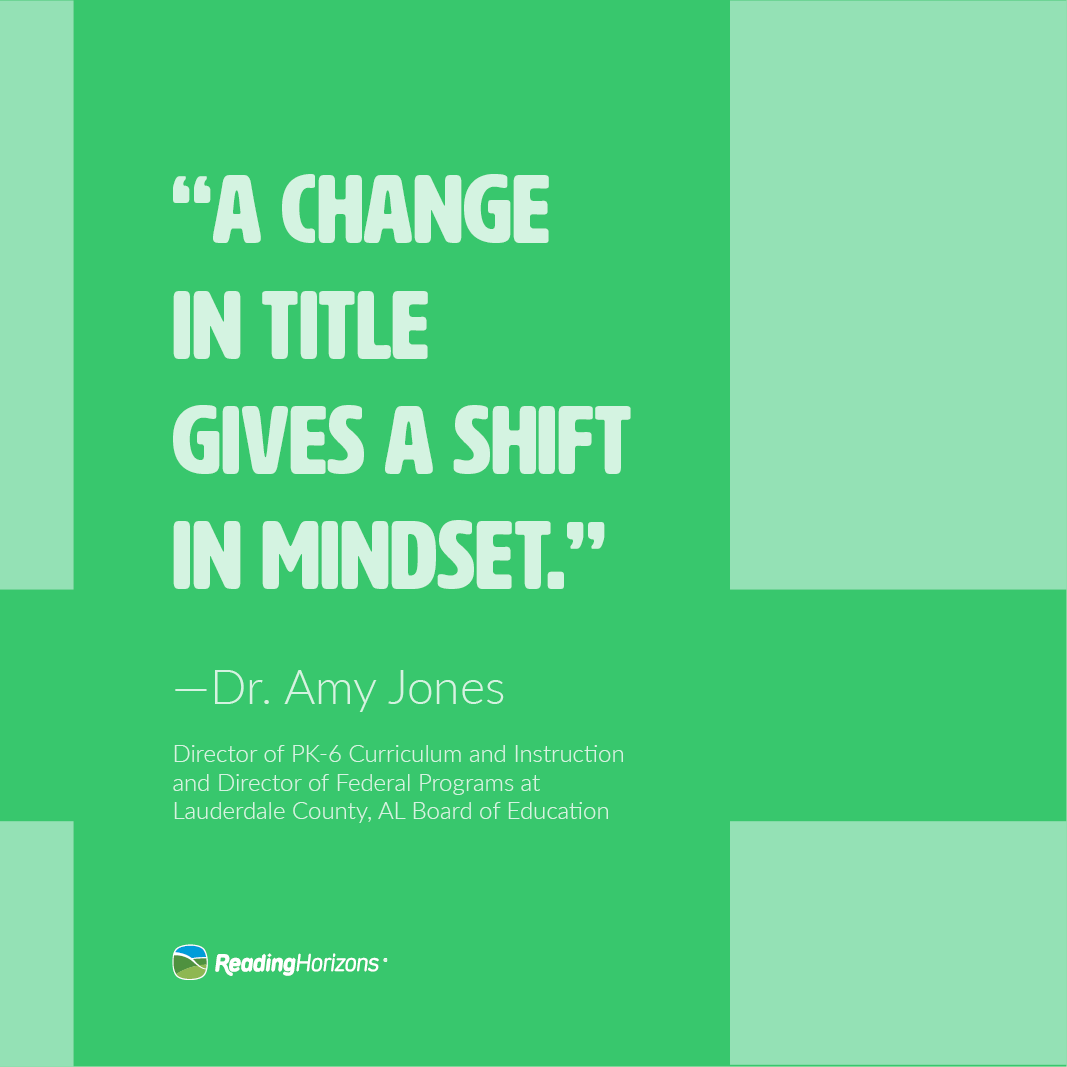5 Ways to Break the Mold of Traditional Spelling Instruction
Listen to the full episode here: Beyond the Weekly Spelling Test: What Works and Why It Matters
 Spelling is tricky. Even as adults, we almost all have a handful of words that we have to pause before spelling—still often flipping a couple letters out of their proper place. Indeed, spelling is the highest level language skill in the English language. If a student can spell a word, they can most likely read it and pronounce it with accuracy.
Spelling is tricky. Even as adults, we almost all have a handful of words that we have to pause before spelling—still often flipping a couple letters out of their proper place. Indeed, spelling is the highest level language skill in the English language. If a student can spell a word, they can most likely read it and pronounce it with accuracy.
Dr. Rebecca Treiman, Professor of Child Developmental Psychology at Washington University, pointed out a few reasons why spelling can be such a difficult skill to master:
- The English alphabetic code is not only used to represent phonemes, which directly relate to letter sounds, it also uses the alphabet to represent morphemes, which don’t always directly correlate to the sounds of the letters (e.g., “-ed” has three different sounds: /id/, /d/, and /t/).
- We don’t learn a lot about spelling from reading because we aren’t focused on the spelling of words when we read; we’re usually focused on the meaning of what we’re reading.
- We don’t have to process every single letter in a word to read it, but to spell it, we do. For example, most people can read the word crocodile without thinking about whether the o in the middle makes the sound of o or a or u; to spell it, you have to know that although it makes a short u sound (also known as the schwa sound), it is still spelled with an o.
And yet, for being the highest level language skill, spelling instruction is deeply entrenched in a simple traditional approach that usually follows the same story: A student is given a list of spelling words that consists of common words or words themed around a story or holiday (what better way to celebrate?). The student works to painstakingly memorize that list of words with the sole goal of getting a good grade on a test that Friday. If all goes well, the student passes the test. But the next week, with the pressure gone, the student starts to accidentally misspell the words again. Rather than learning how to spell the words on the list, the student only learned how to memorize words long enough to pass a test.
So, how do you break your class or school out of this mold? How can you tweak your spelling instruction so that students don’t pass a spelling test just to go straight back to misspelling those same words? Can you make it so your spelling instruction actually accomplishes the goal of improved spelling and not just a one-off test performance?
Here are some tricks from our expert panel on Podclassed on how to make spelling instruction have lasting effects on spelling performance:
1. Start with reviewing your phonics instruction
The best way researchers have found to improve spelling instruction is by linking it to explicit phonics instruction. When spelling instruction is used to help students practice a consistent phonics pattern or rule, students move beyond memorization and into an understanding of the structure of the English language. To reach this end, analyze what you’re using to teach phonics. Is it adequate? Is it aligned with what research has shown works? Is it explicit, systematic, and sequential? Before you can improve your spelling instruction, you have to evaluate your phonics instruction and be sure it’s solid.
Dr. Amy Jones, Director of PK-6 Curriculum and Instruction and Director of Federal Programs at Lauderdale County in Alabama, pointed out that once her teachers had a solid phonics program in place, the conversation naturally turned to how to connect phonics and spelling instruction. At that point, her teachers instinctively saw that the connection would be beneficial.
2. Create spelling lists that are based on phonics patterns, not on stories or themes
With a strong phonics program in place, the content of your spelling tests and lists should dramatically change. Stories or themes should not dictate your word lists; they should be guided by what your students are learning during phonics instruction. When you approach spelling instruction this way, you may elect to use spelling lists and tests in a different way. Stacy Hurst, Curriculum Director at Reading Horizons, recommends that students don’t know what words will be used on the spelling test. Instead, they are given a list of words that follow the pattern you are working on during phonics instruction. This way, you can test students on their understanding of the pattern, not their ability to memorize a list of words.
3. Rename spelling tests (especially in grades K-2) to “phonics checks”
Because spelling instruction is deeply entrenched in tradition, it may be helpful to change what you call spelling tests as you work to transform the practice. As Dr. Amy Jones wisely stated, “If we call things what we’ve always called them, they have a certain stigma attached to them, and those things are harder to change. A change in title gives a shift in mindset.”

Dr. Jones trained her teachers to call spelling tests “phonics checks.” She also encouraged her teachers to use phonics checks to inform their instruction. If students didn’t perform well on these checks, then it was a sign that is wasn’t time to move on to a new skill. Students needed additional instruction and practice. When using spelling tests this way, it may make sense to give the test cold. Not cold in the sense that students haven’t received the instruction needed to perform well on the test, but without students preparing for the test. In this case, you wouldn’t use the test to grade the students but to grade your own instruction and see what you need to focus on moving forward.
Dr. Jones also acknowledged that as students move into the upper grades in elementary, middle, and high school, the traditional spelling test still has a place. Once students are no longer receiving phonics instruction (around 3rd and 4th grade) but have phonics as a foundation, traditional spelling practice makes more sense.
4. Seek out teacher training
Explicit phonics and spelling strategies are not always covered in many teacher preparation programs. Because of this, teacher training in both of these instructional methods can be enlightening and transformative for teachers. If you are a teacher, you may have to seek out training, books, and other resources on your own, or work to pull together a group of your peers to have a larger network to bounce thoughts and ideas off of as you create your own training course on these topics. If you are an administrator, organizing these trainings for every K-2 or K-3 teacher and coming up with a school or district-wide plan for improving the instruction of both phonics and spelling can lead to groundbreaking results in reading and spelling performance.
5. Inform parents about your new approach to spelling
Most likely, the parents of your students were taught to spell using the traditional approach described above. If they have older children, they were also probably taught to spell this way. This approach is often expected. When changing your approach, it may be helpful to inform parents about this change to prevent alarm or concern. When breaking tradition, sometimes people need to be converted to a new way. If you do send home a list of words that follow a phonics pattern, you may want to send it with a one-to-two sentence description of the rule you are helping students master. This way, parents can emphasize and reinforce the rule as they work with their children to practice the words that follow that pattern.

In response to the question “What is the role of spelling in a robust literacy program?”, Stacy Hurst quoted Noah Webster: “Writing is the greatest ornament of a language.” She then proceeded to explain that while spelling instruction is very important, it doesn’t have to take a lot of time. View spelling instruction as an ‘ornament’; it’s an essential ornament, but it is more of an accent than a large undertaking. When you have a solid phonics program in place, it doesn’t take much more time to provide effective spelling instruction. When these subjects are aligned, spelling instruction can easily be covered as an accent to your overall literacy program.